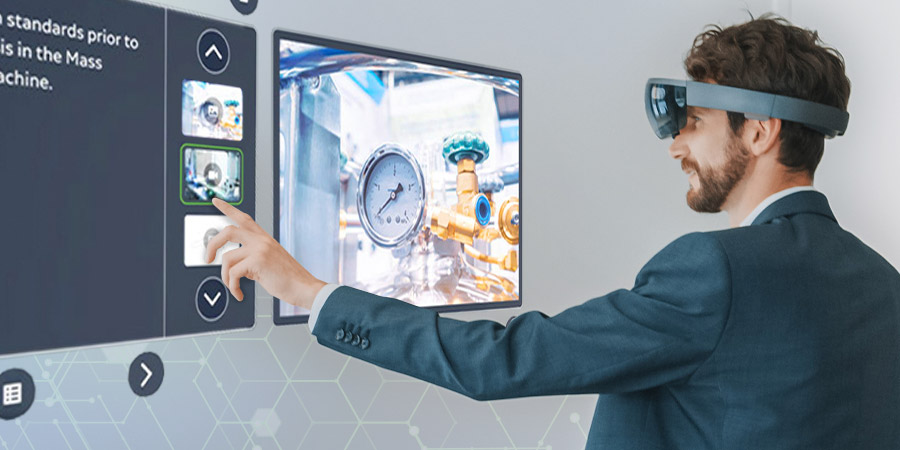Future Trends in IoT Monitoring Software: AI, Blockchain, and Beyond
In the ever-expanding universe of the Internet of Things (IoT), the quest for innovative and adaptive monitoring solutions has become more imperative than ever before. As businesses, industries, and even households embrace IoT technologies at an unprecedented rate, the need for sophisticated IoT monitoring software continues to soar. In this comprehensive discourse, we embark on a journey to explore the future trends that are poised to redefine the landscape of IoT monitoring software. From the integration of Artificial Intelligence (AI) and Blockchain to the evolution of Edge Computing and the transformative power of Augmented Reality (AR), we unravel the threads of innovation that promise to shape the future of IoT monitoring.
Table of Contents
Analyzing the use of IoT Monitoring Software:
The origins of IoT monitoring software can be traced back to the early life of IoT itself. Initially conceived as basic tools for data collection and visualization, these software solutions have developed together with the exponential growth of IoT ecosystems. Today, they stand as foundations of resolve, equipped with advanced features such as real-time analytics, predictive maintenance, and pattern detection. However, as the complexity and scale of IoT deployments continue to increase, the demand for more strong monitoring capabilities has never been more pushing.
Artificial Intelligence: The Revolutionary of IoT Analytics:
At the front of the IoT monitoring revolution stands Artificial Intelligence (AI), using its predictive ability to unlock never-before-seen insights from the overflows of sensor data. Powered by machine learning algorithms, AI-driven analytics have exceeded the area of mere observation, enabling proactive monitoring and prescient decision-making. By smart patterns, detecting anomalies, and forecasting trends in real-time, AI empowers organizations to actively address potential issues, thereby minimizing downtime, optimizing resource allocation, and maximizing the power of IoT devices.
Blockchain: improving Security and Integrity:
As the digital backbone of the future, Blockchain technology emerges as a powerful partner in the search for security and data integrity within IoT monitoring software. By utilizing distributed ledgers and cryptographic basics, Blockchain ensures the flexibility and Verification of IoT data, safeguarding it against tampering, manipulation, and unauthorized access. Moreover, Blockchain facilitates secure peer-to-peer transactions and communications, creating trust in distributed IoT networks. With its cryptographic guarantees and decentralized architecture, Blockchain emerges as an important point in enhancing the security posture of IoT monitoring software.

Edge Computing: Redefining Data Processing Dynamics:
In the age of IoT, where data is the new currency, Edge Computing emerges as a disruptive force reshaping the dynamics of data processing and analytics. By pushing computational capabilities closer to the data source, Edge Computing minimizes latency, conserves bandwidth, and enhances scalability. This separated framework not only facilitates real-time decision-making but also reduces dependence on centralized cloud infrastructure. In the realm of IoT monitoring software, Edge Computing signals a new era of responsiveness, resolve, and efficiency, empowering organizations to extract actionable insights at the network’s edge.
Integration of IoT Device Management Software:
Central to the coordination of IoT ecosystems is the seamless management of IoT devices throughout their lifecycle. IoT Device Management Software assumes this important role, including providing, configuration, monitoring, and maintenance tasks. By integrating strong device management capabilities into IoT monitoring software, organizations can streamline deployment workflows, optimize device performance, and ensure compliance with regulatory standards. From remote diagnostics to firmware updates and security patching, comprehensive device management lays the foundation for a powerful and efficient IoT infrastructure.
Cooperation and Standardization: Linking up the Gulf of Breaking Up:
Despite the proliferation of IoT devices and protocols, interoperability remains a constant challenge in solving the IoT landscape. Standardization initiatives, directed the way by industry partnerships and standards bodies, play an important role in developing compatibility and harmonization among disparate IoT components. By observing established standards and protocols, IoT monitoring software can facilitate seamless integration and communication across different IoT environments. Accepting connection not only unlocks integration but also accelerates innovation and scalability across diverse industry verticals.
Sustainability and Energy Efficiency: Charting a Greener Path Forward:
In the search for technological progress, it is required upon us to tread lightly upon the planet. Sustainability and energy efficiency emerge as paramount considerations in the design and deployment of IoT monitoring software. From optimizing algorithms to minimizing energy consumption, future instances of IoT monitoring software will prioritize eco-friendly practices and green deployment strategies. By utilizing renewable energy sources, implementing intelligent power management solutions, and adopting energy-efficient hardware architectures, organizations can mitigate their carbon footprint while carrying in a more sustainable era of IoT innovation.

Augmented Reality and Virtual Reality: Transforming the User Experience:
The integration of IoT monitoring software with Augmented Reality (AR) and Virtual Reality (VR) technologies signals a structure shift in the visualization and interaction structure. AR and VR interfaces offer deep and involved experiences, allowing users to visualize IoT data in three-dimensional environments and interact with virtual representations of IoT assets. From remote maintenance and training simulations to spatial data visualization and situational awareness, AR and VR integration enrich the user experience and empower operators with intuitive tools for monitoring and troubleshooting IoT infrastructures.
Conclusion:
As we navigate the uncharted waters of the IoT revolution, the trajectory of IoT monitoring software stands as a landmark of innovation and resolve. From the predictive ability of Artificial Intelligence to the cryptographic guarantees of Blockchain, and from the distributed energy of Edge Computing to the deep and involved experiences of Augmented Reality, the future of IoT monitoring software is full of promise and potential. By embracing these transformative trends, organizations can unlock new horizons of efficiency, security, and sustainability, propelling themselves into a future where the possibilities of IoT are limited only by the bounds of imagination.

